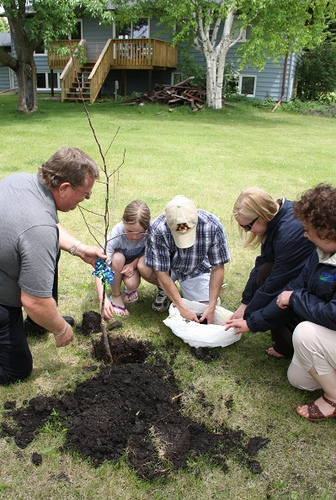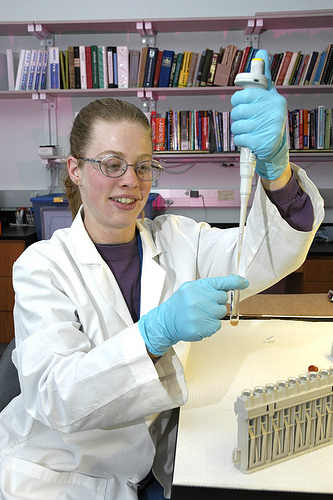
A U.S. Marine from Marine Wing Support Squadron 471 assigned to the task force's 9th Provisional Security Force eats lunch during a break from .50-caliber machine gun marksmanship training near Camp Lemonier, Djibouti, Dec. 31, 2008. Marines with the squadron are on a seven-month deployment to Camp Lemonier providing security and force protection. (U.S. Navy photo by Mass Communication Specialist 2nd Class Jesse B. Awalt/Released)
It is a little known fact that USDA’s Agricultural Marketing Service (AMS) inspects the Meals, Ready-to-Eat, or MREs, that provide nourishment to our soldiers serving overseas in the U.S. Armed Forces. Throughout their tours of duty, MREs serve as both daily nourishment and holiday meal for thousands of U.S. service men and women. Read more »
The USDA and the U.S. Agency for International Development (USAID) have once again joined forces to collaborate with individuals and organizations that feed hungry people, promote sustainable development and provide technical assistance around the world. This is the thirteenth year of the International Food Aid and Development Conference, and I was proud to deliver keynote remarks here in Kansas City, Mo. Nearly 600 people from more than 25 countries discussed what has worked, what has not, and what we can do in the future to improve our food assistance and program delivery.
The U.S. government’s international food assistance programs will benefit 5.2 million people in the developing world this year. The challenges of global food security are enormous — nearly one billion people are malnourished, and this number will likely grow as the world population continues to rise. Meanwhile, the United States, like many other nations, is facing serious budget pressures. In addition, commodity prices and demand continue to rise, squeezing food assistance dollars further. Read more »

Valley City area office staff helped Cody Thibert and his daughter plant an apple tree they presented them in honor of Homeownership Month. The Thibert’s newly finished deck can be seen in the background.
Starting a new career, Cody Thibert moved his wife and their three children to a new community. Searching for a home in Valley City, North Dakota, Cody heard about USDA Rural Development through his father’s co-worker. He decided to inquire about the housing programs and found a fit with the USDA Single Family Home Loan program. The Thiberts were able to purchase a four bedroom, bi-level home with a low interest rate and an extended term loan. Read more »

Dr. Amy Winter, a Veterinary Medical Officer with the USDA Animal and Plant Health Inspection Service (APHIS)
Since childhood I’ve always wanted to be a veterinarian, which makes my position at the U.S. Department of Agriculture (USDA) the perfect job for me. I’m Dr. Amy Winter, a Veterinary Medical Officer with the USDA Animal and Plant Health Inspection Service (APHIS). I’m stationed at the National Veterinary Services Laboratories (NVSL) in Ames, Iowa. I joined the staff in Ames in October 2002 – only five months after I graduated from veterinary school. Read more »
The long battle to mitigate and potentially eliminate cheatgrass, one of the American West’s most menacing invasive weeds, has just taken a positive step forward. U.S. Forest Service research, conducted by ecologist Susan Meyer, has demonstrated in field trials that the fungal pathogen known commonly has Black Fingers of Death is very effective in eliminating the cheatgrass carryover seed bank that can come back to haunt a restoration seeding after apparently successful control. Read more »
Last week Agriculture Under Secretary for Rural Development Dallas Tonsager met with Twenty-two Utah business leaders for a White House Business Council roundtable. The meeting was hosted by Zions Bank Corporation and USDA Rural Development. Salt Lake City was one of the 100 communities across the nation to hold a White House Business Council event. The Salt Lake meeting gave businesses the opportunity to share their ideas for job creation with the White House and USDA.
Tonsager, a key Obama Administration official for rural economic development efforts, sought advice from the business community on ways to improve the economic climate. The exchange also educated business and community leaders in attendance about resources available through USDA Rural Development. Read more »



